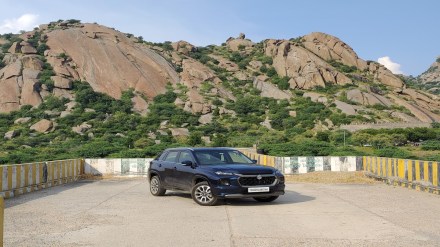There is more to Rajasthan than forts and palaces. There is desert, wildlife, multiple cuisines and royalty. There are rivers as well.
And then there are rocks. Some of the oldest surface rocks in the world; rocks so old that it has taken wind millions of years to carve into beautiful formations, rocks so old these predate life.
We recently took a not-so-rocky-road to a rocky mountain in southwest Rajasthan. The place is called Perwa, located about 650 km from Delhi, 850 km from Mumbai and 130 km from Udaipur.
We drove from Udaipur, in a Maruti Suzuki Grand Vitara.
“Of late, this region has become famous for leopard sightings,” Shailendra Singh Chauhan, a local geologist, told us. “But before there were leopards, before dinosaurs and even before life, these rocks existed.”
Perwa falls under the Jawai ecosystem, famous for its wild leopards and crocodiles. Leopards live on hillocks carved by wind. It gives them some protection from elements, and natural caves to raise their litter.
Taking us on top of the Perwa hillock, Chauhan said: “Millions of years ago, these would have been round rocks. This is what consistently can do. These beautiful shapes have been carved by wind consistently blowing across granite (hardest rock in the world). After a few million more years, all this granite will be lost to wind. It’s only in Perwa, Jawai and Guru Shikhar (near Mt Abu) where you can find such natural rock art.”
Geologists say the Aravali range is 340-670 million years old. That is older than the earliest humans (5 million years ago), India ramming into Asia (40-50 million years ago), dinosaurs (230 million years ago to 65 million years ago) and around the same time when life shifted from oceans to land (600 million years ago).
Also read: Finance Ministry asks 92 CPSEs to register on the TReDS platform
Pointing at similar but smaller hillocks around Perwa, Chauhan said: “The rocks you see here are far older than the Aravalis. We cannot arrive at the exact age because these haven’t been dated (the age of rocks is determined by stratigraphy, a process that studies both organisms found inside rocks as well as radioactive dating). But common sense dictates these rocks existed in the Pangaea, the supercontinent.”
While big hillocks like Perwa will take many millions of years to erode, smaller ones have already reached the end of life.
On the banks of the Jawai River (a tributary of the Luni), where crocodiles bask in the sun, Chauhan showed us smaller hillocks that started eroding the same time as the bigger ones, but due to their size they’ve almost reached the end of life. “Ones that look like a peacock’s head and are a few feet across are likely to stay only a few thousand more years,” Chauhan said.
These rock formations do remind one of the Twelve Apostles of Australia (these were actually eight limestone stacks off the shore of Port Campbell National Park, in Victoria, and one collapsed in July 2005. Now, seven remain).
Similar rocks are found almost 120 km south of Perwa, near Guru Shikhar (the highest peak of Rajasthan, at 1,722 metres above sea level). “At such heights (over 1,500 metres) wind speed is substantial to carve granite into other-worldly shapes,” Chauhan said. “But it takes time. You may not see such formations in the Himalayas, because they are young. The Aravalis are the oldest fold mountains in the world. Bruised by wind.”
Also read: Instagram now has over 2 billion active users, WhatsApp has 2 billion daily users
India is truly incredible; you just need to travel deep. Travel and tourism also rejuvenates the economy and supports local jobs.
Places to stay: There are no places to stay in Perwa, but you can explore Ranakpur (40 km away) or Udaipur (130 km away).
(While Perwa, Jawai and Guru Shikhar have some of India’s oldest surface rocks whose shapes set them apart, in Odisha scientists recently found a grain of magmatic zircon estimated to be over 4.2 billion years old—published in journal Scientific Reports. Also, the Dharwar craton—in modern-day Karnataka and Tamil Nadu—is estimated to be over 2.5 billion years old.)
